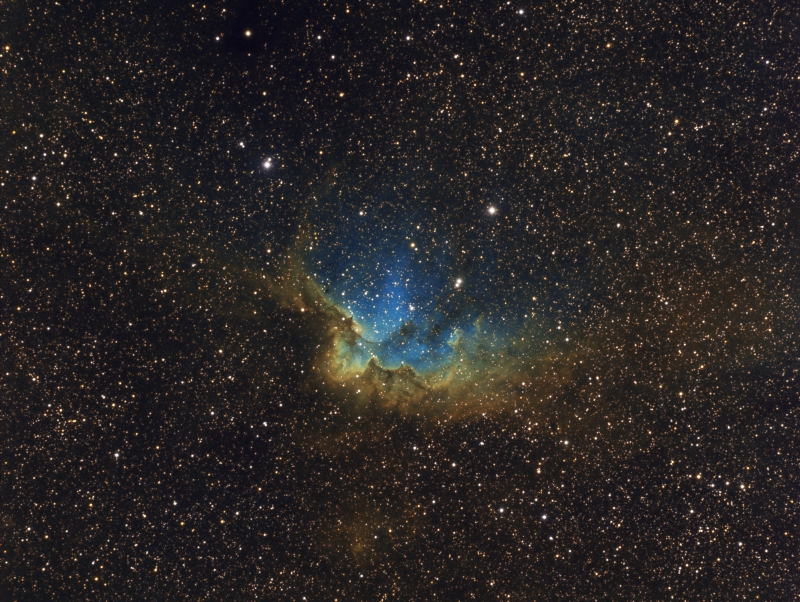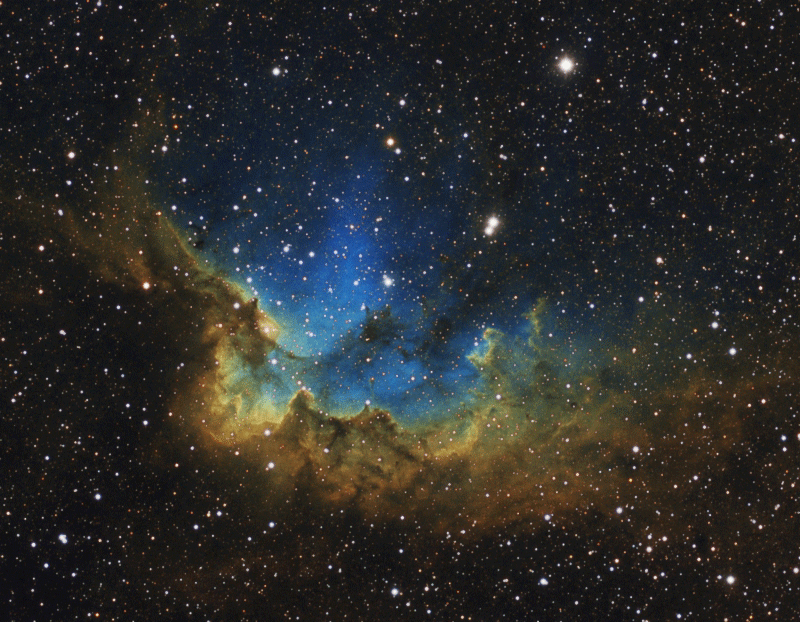Thanks Rebekah!
Stargrrl wrote:For us astrophoto novices, is the dual color of yellow-blue the result of the type of filter applied? Or two main types of gas?
... it's both!
tldr; Yellow areas (red+green) represent areas of strong Sulfur and Hydrogen emission. Blue areas represent strong Oxygen and weak Hydrogen and Sulfur emission.
Each of the three narrowband filters passes a narrow band of wavelengths associated with a specific spectral emission line commonly present in emission nebulae.
Hydrogen-alpha at 656 nm, Sulfur-II at 672 nm, Oxygen-III at 498 nm. O-III is in the blue-green part of the visual spectrum and both H-a and S-II are in the red. The result of exposing through a single filter is a monochrome image showing the strength of that emission line and hence the presence of the element in the nebula.
To make a composite color image the three monochrome images are mapped to R, G, and B color channels. This part is purely aesthetic, not scientific, since the channels can be mapped in any way you please to produce whatever colors you want. I tend to follow the convention used in many narrow-band mapped color images based on the original "SHO" or "Hubble" palette where Red = S-II, Green = Ha, Blue = O-III.
Stargrrl wrote:
I found out also that it was discovered by Caroline Herschel!
She was amazing. I was just reading about her in
Alan Hirshfeld's book, Parallax (highly recommended!)


